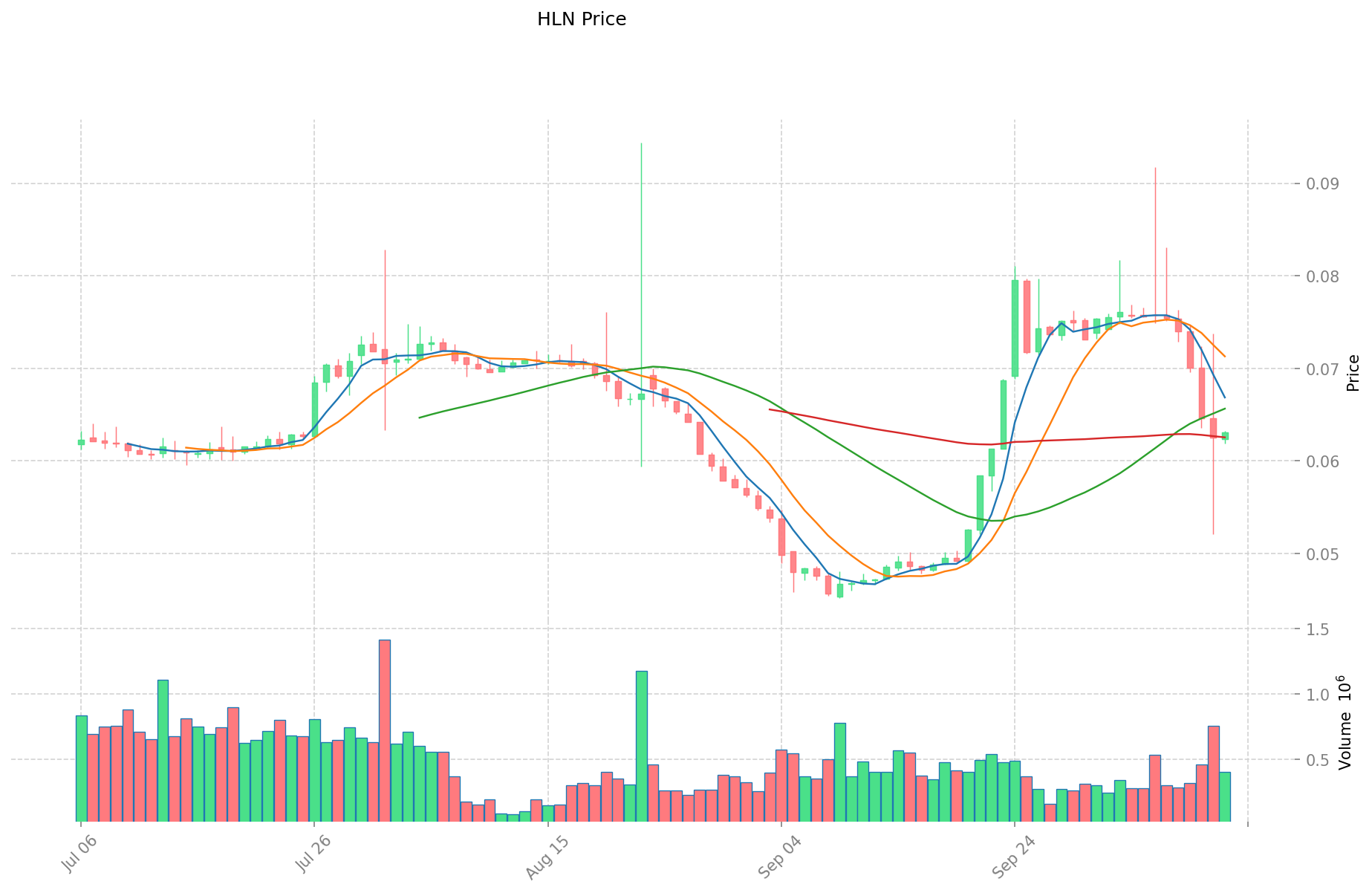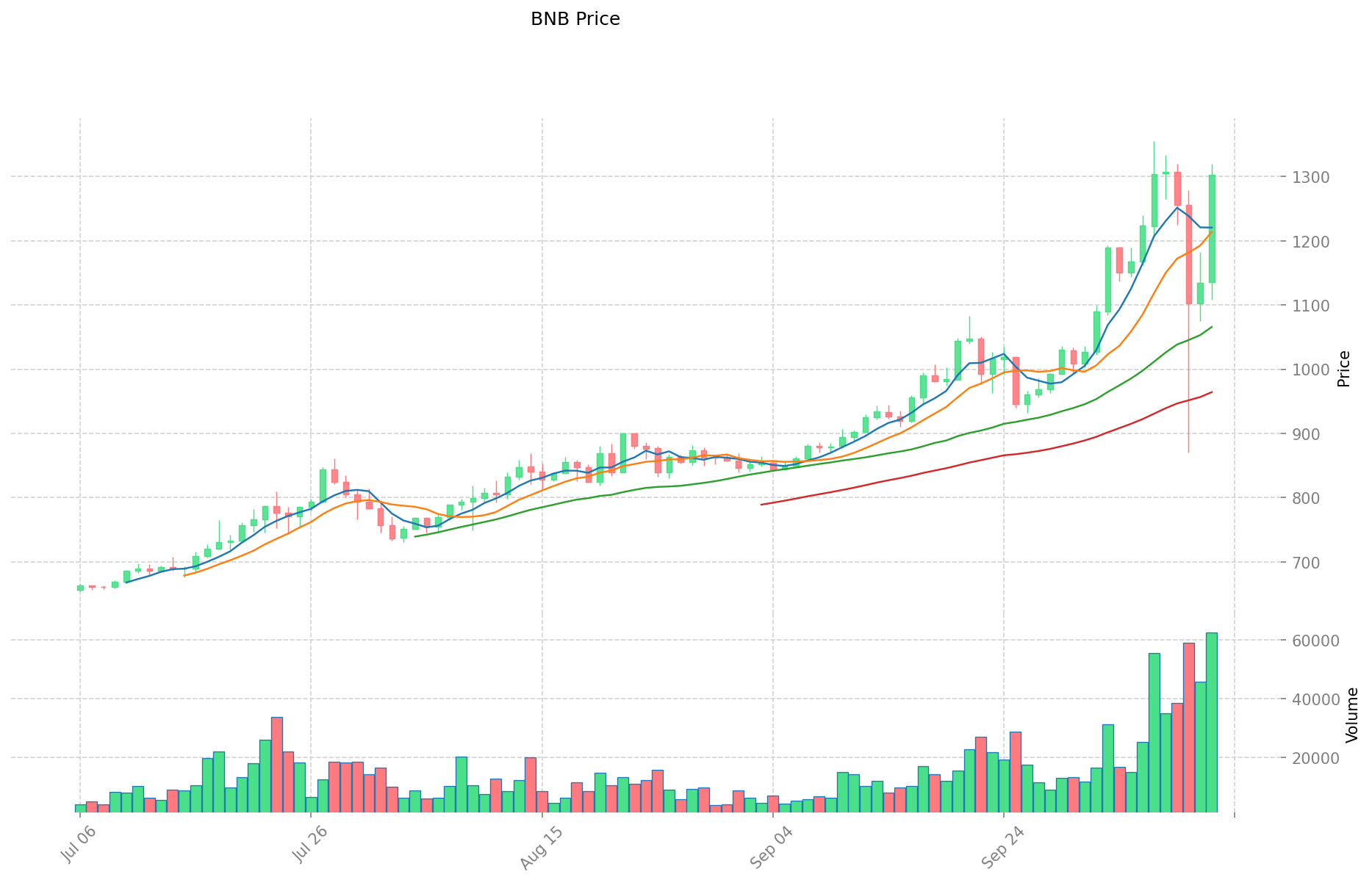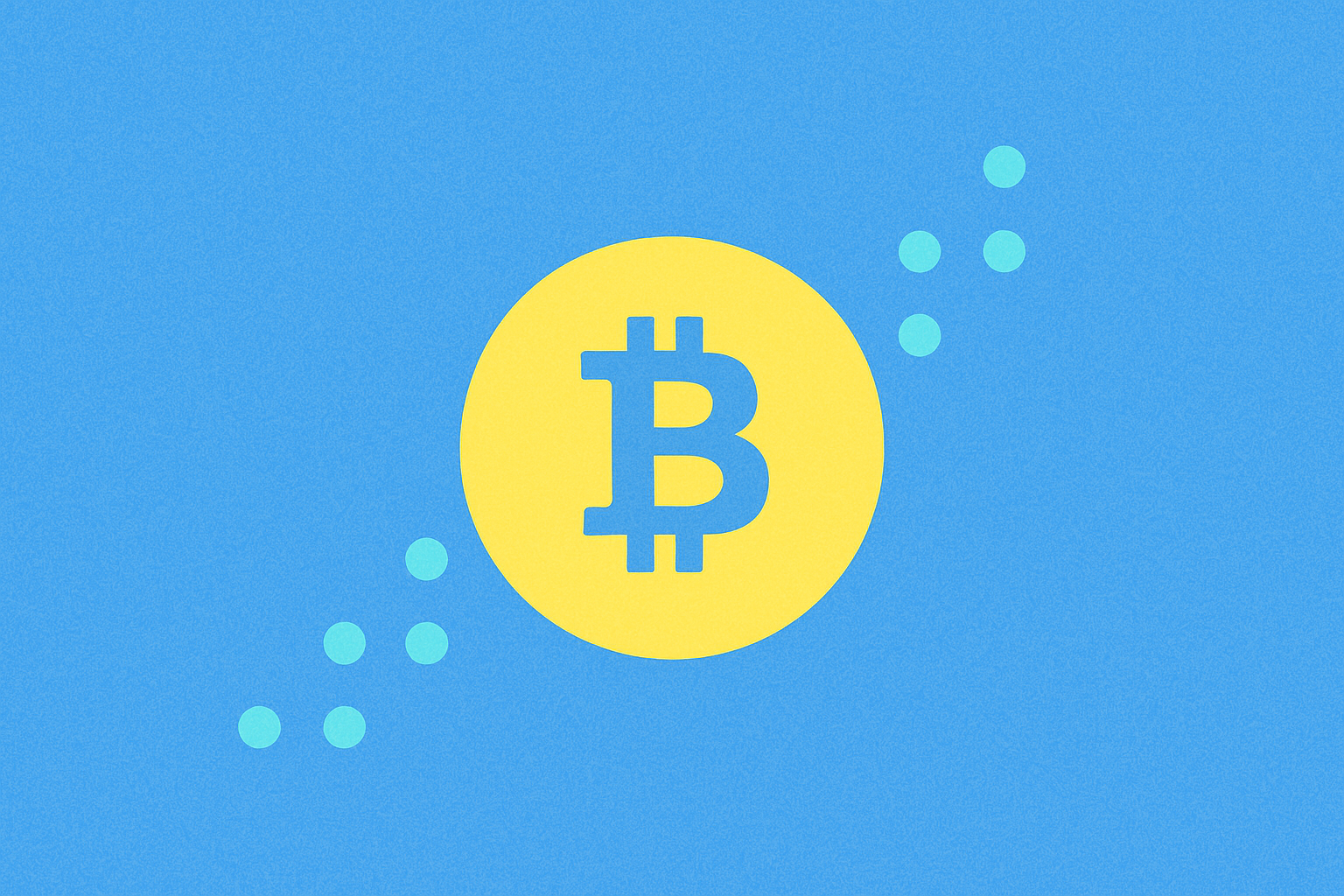HLN vs BNB: Merkeziyetsiz finansın geleceğini şekillendiren blockchain devlerinin mücadelesi


Giriş: HLN ve BNB Yatırımlarının Karşılaştırılması
Kripto para piyasasında, Enosys Global (HLN) ile Binance Coin (BNB) karşılaştırması, yatırımcılar açısından kaçınılmaz bir gündem maddesi olmuştur. Bu iki kripto varlık; piyasa değeri sıralamaları, kullanım alanları ve fiyat performansındaki belirgin farklılıkların yanı sıra, kripto varlık ekosisteminde farklı konumlandırmaları temsil etmektedir.
Enosys Global (HLN): Lansmanından bu yana, çoklu zincir DeFi ve getiri toplama odaklı yapısıyla piyasa tarafından kabul görmüştür.
Binance Coin (BNB): 2017’de piyasaya sürülmüş, Binance ekosisteminin temel yakıtı olarak benimsenmiş ve küresel işlem hacmi ile piyasa değeri açısından en büyük kripto paralar arasında yer almıştır.
Bu makalede HLN ve BNB’nin yatırım değerleri; geçmiş fiyat hareketleri, arz mekanizmaları, kurumsal adaptasyon, teknolojik ekosistemler ve gelecek öngörüleri çerçevesinde kapsamlı biçimde karşılaştırılacak ve yatırımcıların en çok merak ettiği şu soruya yanıt aranacaktır:
"Şu an hangisi daha avantajlı bir yatırım?" I. Fiyat Geçmişi ve Güncel Piyasa Durumu Karşılaştırması
HLN ve BNB Tarihsel Fiyat Gelişimi
- 2023: HLN piyasaya sürüldü ve ilk etapta fiyat volatilitesi yaşandı.
- 2025: BNB, BNB Chain ekosisteminin büyümesiyle 8 Ekim’de tüm zamanların en yüksek seviyesi olan 1.330,51 $’a ulaştı.
- Kıyaslama: Son boğa piyasasında HLN, çıkış fiyatından 0,56 $’a yükselirken BNB, yaklaşık 200 $’dan 1.300 $’ın üzerine çıkarak çok daha güçlü bir büyüme kaydetti.
Güncel Piyasa Görünümü (13 Ekim 2025)
- HLN güncel fiyat: 0,06307 $
- BNB güncel fiyat: 1.303 $
- 24 saatlik işlem hacmi: HLN 25.250,90 $ | BNB 77.046.696,18 $
- Piyasa Duyarlılık Endeksi (Korku & Açgözlülük Endeksi): 24 (Aşırı Korku)
Anlık fiyatları görmek için tıklayın:
- HLN güncel fiyat bilgisi Piyasa Fiyatı
- BNB güncel fiyat bilgisi Piyasa Fiyatı


II. BNB’nin Yatırım Değerini Belirleyen Temel Unsurlar
Arz Mekanizması (Tokenomik)
- BNB: Deflasyonist model ve üç ayda bir yakım mekanizması — Binance, kârının %20’siyle BNB geri alıp yakıyor ve toplam arzı zaman içinde azaltıyor
- 📌 Tarihsel eğilim: Azalan arz, piyasa dalgalanmalarına rağmen fiyatın yukarı yönlü hareket etmesini sağladı
Kurumsal Benimseme ve Piyasa Kullanımı
- Kurumsal sahiplik: Dünyanın en büyük kripto para borsasında kullanım tokenı olarak benimsenme artıyor
- Kurumsal uygulamalar: İşlem ücretlerinde %25'e varan indirim avantajı ile kullanıcı bağlılığını artırıyor
- Regülasyon yaklaşımları: Önde gelen borsa tokenı olarak farklı regülasyonlara tabi
Teknolojik Gelişim ve Ekosistem İnşası
- BNB Chain ekosistemi: Sürekli büyüyor, geliştirici ve proje çekiyor
- BNB kullanımı: DeFi uygulamalarında – likidite madenciliği, borç verme, stake gibi – artan fayda
- Ekosistem karşılaştırması: Sadece borsa tokenı olmanın ötesinde, çok sayıda finansal kullanım alanı sunuyor
Makroekonomik Faktörler ve Piyasa Döngüleri
- Piyasa oynaklığı dönemlerindeki performans: Kısa vadeli dalgalanmalara rağmen genel olarak yukarı yönlü seyir
- Piyasa rekabeti: Diğer borsa tokenlarının oluşturduğu rekabet baskısı
- Piyasa duyarlılığı: Fiyat, kripto piyasasının genel eğilimleri, regülasyonlar ve yatırımcı algısından etkileniyor
III. 2025-2030 Fiyat Tahmini: HLN ve BNB
Kısa Vadeli Öngörü (2025)
- HLN: Temkinli 0,0478 $ – 0,0629 $ | İyimser 0,0629 $ – 0,0931 $
- BNB: Temkinli 1.066,41 $ – 1.300,50 $ | İyimser 1.300,50 $ – 1.339,52 $
Orta Vadeli Öngörü (2027)
- HLN’in büyüme aşamasına geçmesi ve fiyatının 0,0539 $ – 0,1105 $ aralığına ulaşması bekleniyor
- BNB için istikrarlı bir yükseliş öngörülmekte; fiyatın 1.035,94 $ – 1.784,12 $ aralığında olması bekleniyor
- Temel etkenler: Kurumsal sermaye girişi, ETF’ler, ekosistem gelişimi
Uzun Vadeli Öngörü (2030)
- HLN: Temel senaryo 0,1299 $ – 0,1427 $ | İyimser senaryo 0,1427 $ – 0,2127 $
- BNB: Temel senaryo 1.241,26 $ – 1.970,26 $ | İyimser senaryo 1.970,26 $ – 2.127,88 $
Yasal Uyarı: Bu tahmin yalnızca bilgilendirme amaçlıdır ve yatırım tavsiyesi değildir. Kripto para piyasası yüksek derecede oynak ve öngörülemezdir. Yatırım kararı almadan önce mutlaka kendi araştırmanızı yapınız.
HLN:
| 年份 | 预测最高价 | 预测平均价格 | 预测最低价 | 涨跌幅 |
|---|---|---|---|---|
| 2025 | 0,0931364 | 0,06293 | 0,0478268 | 0 |
| 2026 | 0,095980836 | 0,0780332 | 0,071010212 | 23 |
| 2027 | 0,11049891286 | 0,087007018 | 0,05394435116 | 37 |
| 2028 | 0,1431917998735 | 0,09875296543 | 0,0681395461467 | 56 |
| 2029 | 0,16452244040638 | 0,12097238265175 | 0,06774453428498 | 91 |
| 2030 | 0,212693643178306 | 0,142747411529065 | 0,129900144491449 | 126 |
BNB:
| 年份 | 预测最高价 | 预测平均价格 | 预测最低价 | 涨跌幅 |
|---|---|---|---|---|
| 2025 | 1.339,515 | 1.300,5 | 1.066,41 | 0 |
| 2026 | 1.557,60885 | 1.320,0075 | 990,005625 | 1 |
| 2027 | 1.784,122137 | 1.438,808175 | 1.035,941886 | 10 |
| 2028 | 2.159,36330904 | 1.611,465156 | 1.450,3186404 | 24 |
| 2029 | 2.055,1015134468 | 1.885,41423252 | 1.093,5402548616 | 45 |
| 2030 | 2.127,878502822072 | 1.970,2578729834 | 1.241,262459979542 | 51 |
IV. Yatırım Stratejisi Karşılaştırması: HLN ve BNB
Uzun Vadeli ve Kısa Vadeli Yatırım Stratejileri
- HLN: Çoklu zincir DeFi ve getiri toplama potansiyelini hedefleyen yatırımcılar için uygun
- BNB: Ekosistem büyümesi ve borsa faydasını öne çıkaran yatırımcılar için uygun
Risk Yönetimi ve Varlık Dağılımı
- Temkinli yatırımcılar: HLN için %10, BNB için %90 oranında dağılım
- Agresif yatırımcılar: HLN için %30, BNB için %70 oranında dağılım
- Korumalı portföy: Stablecoin tahsisi, opsiyonlar, döviz çeşitlendirmesi
V. Potansiyel Risk Karşılaştırması
Piyasa Riski
- HLN: Daha düşük piyasa değeri ve işlem hacminden dolayı yüksek oynaklık
- BNB: Genel kripto piyasası algısına ve borsa bazlı risklere maruz kalma
Teknoloji Riski
- HLN: Ölçeklenebilirlik ve ağ istikrarı
- BNB: Merkezileşme ve BNB Chain’deki güvenlik açıkları olasılığı
Regülasyon Riski
- Küresel düzenleyici politikalar her iki token üzerinde farklı etkilere sahip olabilir; BNB, büyük bir borsa ile bağlantısı nedeniyle daha yakın incelemeye tabi olabilir
VI. Sonuç: Hangisi Daha Mantıklı Bir Alım?
📌 Yatırım Değeri Özeti:
- HLN avantajları: Çoklu zincir DeFi’ye odaklanma, getiri toplama alanında yüksek büyüme beklentisi
- BNB avantajları: Yerleşik ekosistem, dünyanın en büyük kripto borsasında güçlü kullanım, deflasyonist tokenomik yapı
✅ Yatırım Tavsiyesi:
- Yeni yatırımcılar: Daha yüksek risk/ödül için HLN’ye düşük, daha yerleşik fayda için BNB’ye yüksek oran ayırmayı değerlendirebilir
- Deneyimli yatırımcılar: Her iki tokenı birlikte içeren dengeli bir yaklaşım; risk toleransı ve piyasa koşullarına göre oranlamalar yapılabilir
- Kurumsal yatırımcılar: Likiditesi ve ekosistem büyümesi nedeniyle BNB’ye odaklanmalı, uzun vadeli potansiyel için HLN’yi izlemelidir
⚠️ Risk Uyarısı: Kripto para piyasası yüksek volatiliteye sahiptir, bu makale yatırım tavsiyesi değildir. None
VII. SSS
S1: HLN ve BNB arasındaki ana farklar nelerdir? C: HLN çoklu zincir DeFi ve getiri toplama odaklıdır; BNB ise Binance ekosisteminin kullanım tokenıdır. BNB daha büyük bir piyasa değerine, daha yüksek işlem hacmine ve güçlü bir ekosisteme sahipken; HLN daha yeni bir token olup DeFi alanında yüksek büyüme potansiyeli taşır.
S2: Tarihsel olarak hangi token daha iyi fiyat performansı gösterdi? C: BNB, tarihsel olarak çok daha güçlü bir büyüme göstermiştir. Son boğa piyasasında BNB yaklaşık 200 $’dan 1.300 $’ın üstüne çıkarken, HLN başlangıç fiyatından 0,56 $’a yükselmiştir.
S3: HLN ve BNB’nin arz mekanizmaları nasıl farklılık gösteriyor? C: BNB, deflasyonist bir model ile üç ayda bir yapılan yakımlarla arzı azaltır; Binance, kârının %20’siyle BNB geri alıp yakar. HLN’nin arz mekanizmasına dair net bilgi bulunmamaktadır.
S4: BNB’nin yatırım değerini etkileyen başlıca faktörler hangileridir? C: Deflasyonist tokenomik, artan kurumsal benimseme, büyüyen BNB Chain ekosistemi, DeFi’de çeşitlenen kullanım alanları ve Binance borsa ücretlerinde indirim sağlayan token rolü başlıca faktörlerdir.
S5: HLN ve BNB için uzun vadeli fiyat öngörüleri nasıl karşılaştırılıyor? C: 2030 yılı için HLN’nin temel senaryosu 0,1299 $ – 0,1427 $, iyimser senaryosu 0,1427 $ – 0,2127 $ aralığıdır. BNB’nin temel senaryosu 1.241,26 $ – 1.970,26 $, iyimser senaryosu ise 1.970,26 $ – 2.127,88 $ aralığıdır.
S6: HLN ve BNB yatırımlarında öne çıkan başlıca riskler nelerdir? C: HLN, daha düşük piyasa değeri ve hacmi nedeniyle daha yüksek volatilite ve teknik riskler taşır. BNB ise genel piyasa duyarlılığına, borsa kaynaklı risklere ve büyük bir borsayla bağlantısı nedeniyle olası regülasyon incelemesine maruz kalabilir.
S7: Yatırımcılar HLN ve BNB arasında portföy dağılımını nasıl yapmalı? C: Temkinli yatırımcılar için %10 HLN, %90 BNB; agresif yatırımcılar için %30 HLN, %70 BNB önerilebilir. Portföy dağılımı, bireysel risk iştahı ve piyasa koşulları dikkate alınarak ayarlanmalıdır.

BNB'nin yeni zirvesi ve yatırımcılar için önemi

BNB pump'ı $1,375: Son yükselişin arkasındaki etkenler

Bir Kripto Projesinin Temelleri Nasıl Analiz Edilir?

2025 ve ilerleyen yıllarda BNB fiyatı ne kadar yükselecek?

TRON Fiyat Analizi: 2025 TRX Pazar Eğilimleri ve Yatırım Beklentileri

Avalanche (AVAX) 2025 Fiyat Analizi ve Piyasa Trendleri

Dropee Günlük Kombinasyonu 12 Aralık 2025

Tomarket Günlük Kombinasyonu 12 Aralık 2025

SEI Airdrop Ödülleri’ne Katılım ve Talep Etme Kılavuzu

Kripto para birimlerinde algoritmik alım satım için etkili stratejiler

Stock-to-Flow Model ile Bitcoin'in Değerlemesini Anlamak





